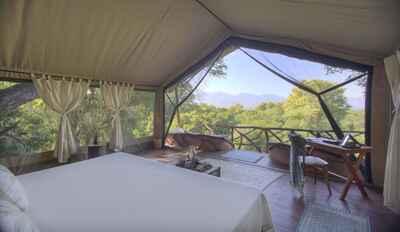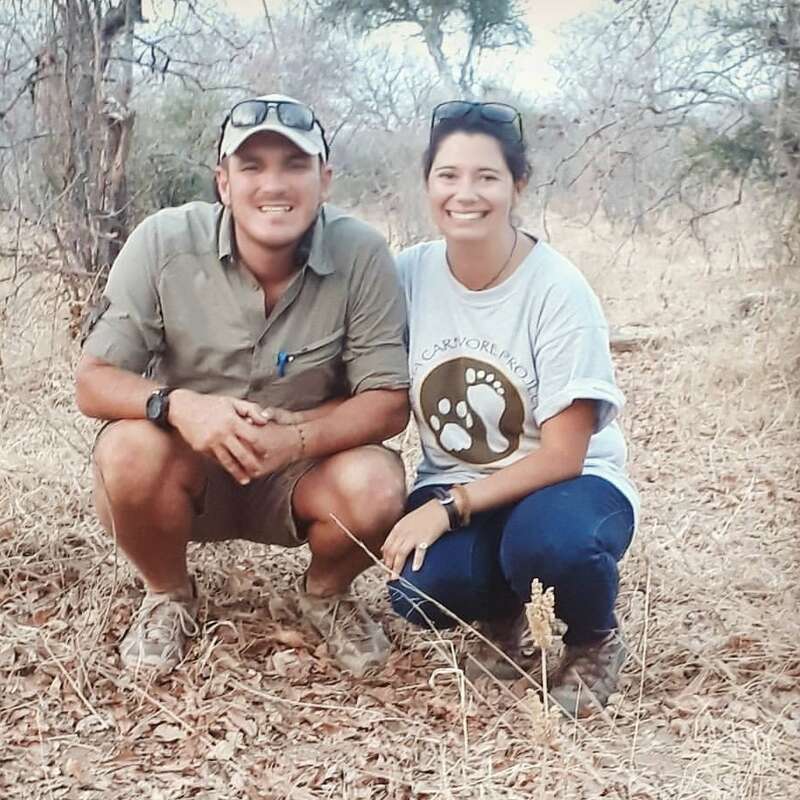About Sarara Treehouses
With luxurious accommodation, breathtaking views and outstanding cultural experiences, Sarara Treehouses is one of the top camps in northern Kenya.
Sarara was founded by Piers and Hilary Bastard in the 1970s to promote wildlife conservation, following the devastating effects of poaching earlier that century. Since then, the area has flourished, with elephants and other wildlife starting to return to the region. Today Sarara and the Namunyak Conservancy are a flagship model for community-driven conservation. The current owners, Jeremy and Katie Bastard, took over Sarara in 2010, and went on to build Sarara Treehouses in 2018. Located in a tropical forest, Sarara Treehouses combines luxurious accommodation in a spectacular setting with a good dose of adventure. With your own private guide and a wide range of activities on offer there is plenty to keep you occupied, but what really makes Sarara Treehouses special is the sense of culture and connection with the local Samburu people. The camp has been built by the community for the community, and the proceeds from the camp help fund a number of projects to improve livelihoods and support conservation. No stay at Sarara Treehouses is complete without a trip to the nearby Reteti Elephant Sanctuary, but our top tip is to visit the Singing Wells, where you can hear the locals chanting as they draw water for their livestock.
Our view
Sarara Treehouses is an adventurous alternative to the main Sarara camp. Apart from enjoying its beautiful location and blissfully relaxed atmosphere, you can take part in a wide range of activities here. We think this is one of Kenya’s most exciting and enjoyable tented camps and we recommend it to anyone who is reasonably fit (the steps are a proper climb) and active.
Accommodation
8 tents
Children
Best for 8+
Open
Closed for the month of November
Activities

4WD Safari

Birdwatching

Cultural excursion

Elephant encounter

Fly-camping

Guided walking safari

Horse-riding

Night drive

Private activities
Traveller reviews of Sarara Treehouses
11 real, un-edited reviews from Expert Africa's travellers.
Arrived 6 Feb 2025, 3 nights
"Sarara Treehouses review"
Overall rating: Excellent
Arrived 27 Jan 2025, 2 nights
"Sarara Treehouses review"
Overall rating: Excellent
Arrived 13 Sep 2024, 3 nights
"Sarara Treehouses review"
Overall rating: Excellent
Arrived 14 Sep 2024, 3 nights
"Sarara Treehouses review"
Overall rating: Excellent
Arrived 18 Aug 2023, 2 nights
"Sarara Treehouses review"
Overall rating: Excellent
Arrived 30 Jul 2023, 3 nights
"Sarara Treehouses review"
Overall rating: Excellent
Arrived 22 Oct 2022, 3 nights
"Sarara Treehouses review"
Overall rating: Excellent
Arrived 9 Jun 2022, 3 nights
"Sarara Treehouses review"
Overall rating: Excellent
Arrived 17 Feb 2022, 3 nights
"Live the high life"
Overall rating: Excellent
Arrived 16 Jan 2022, 4 nights
"Sarara Treehouses review"
Overall rating: Excellent
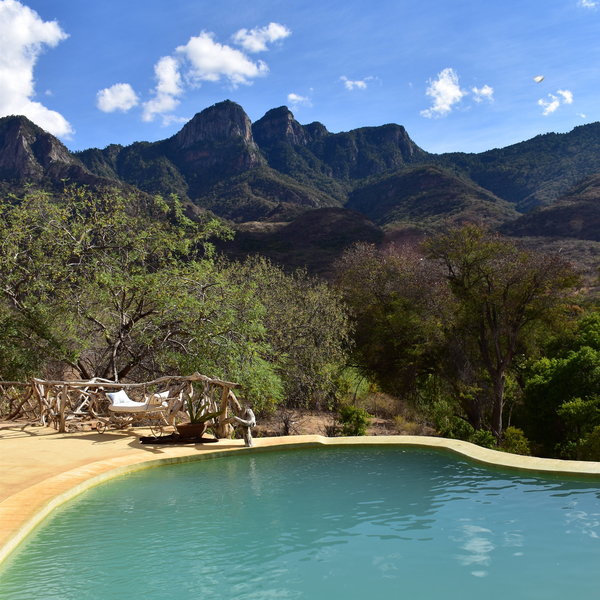
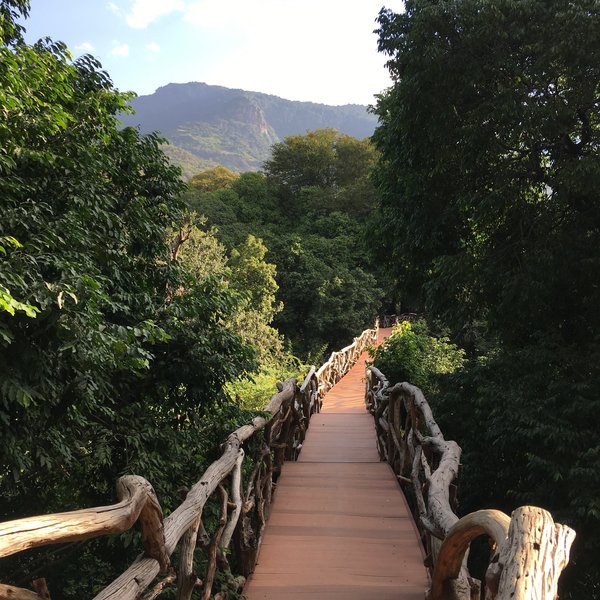
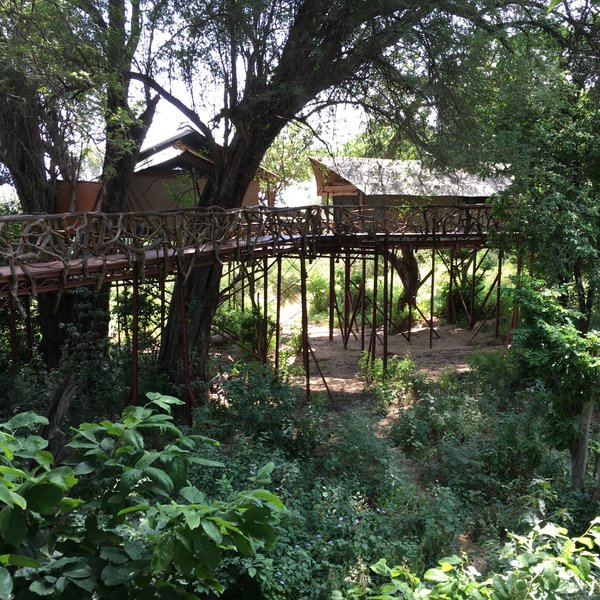
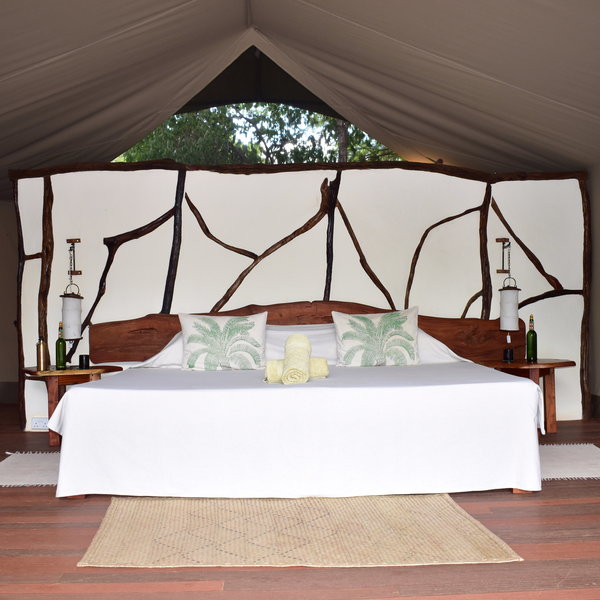
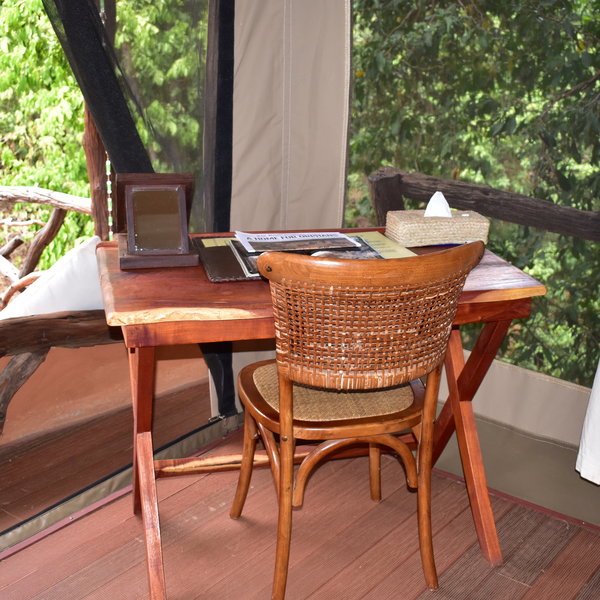
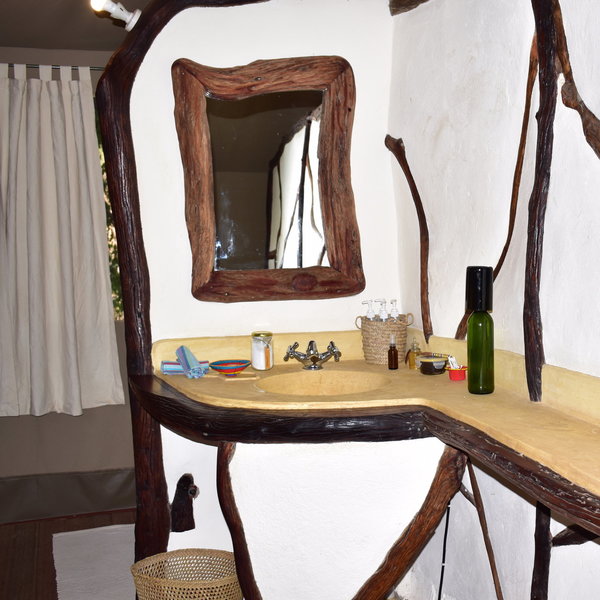
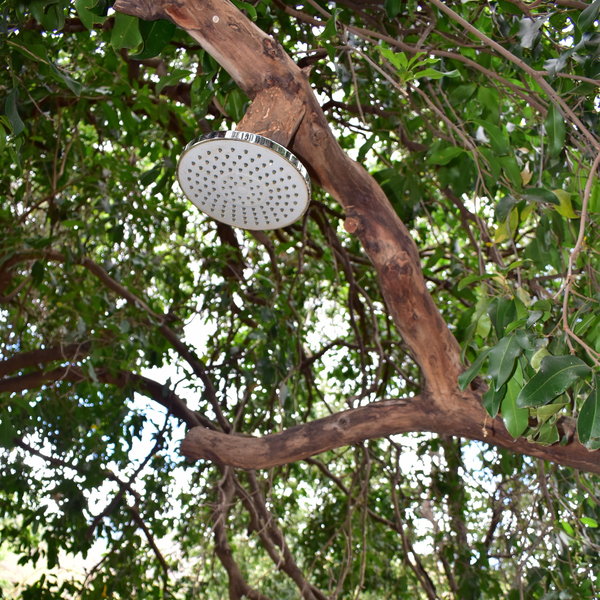
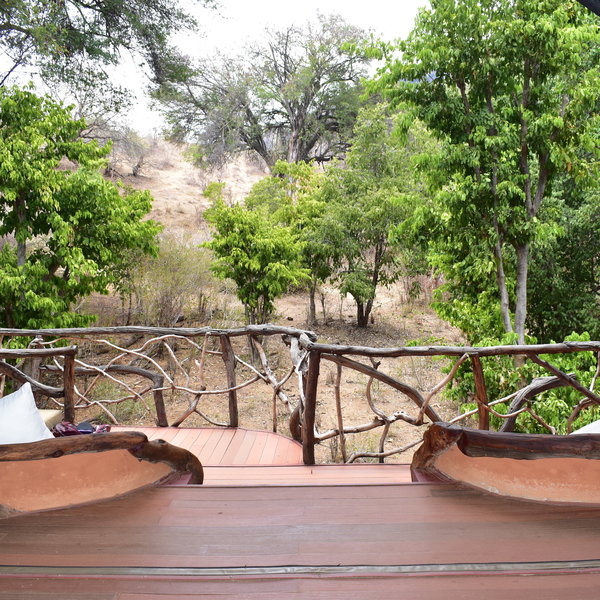
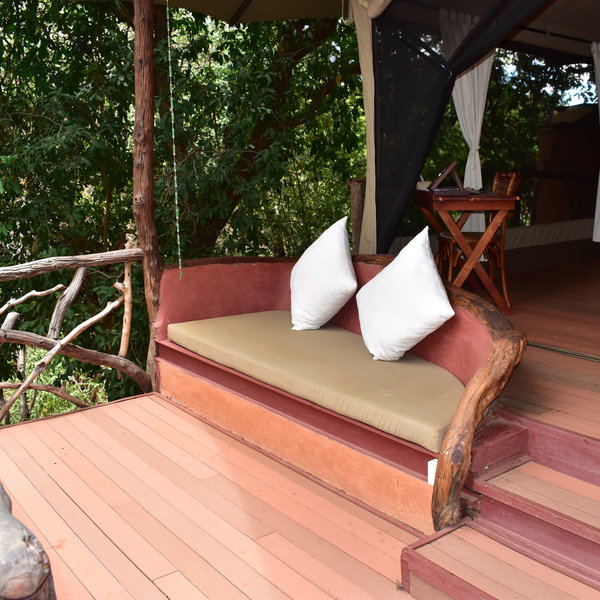
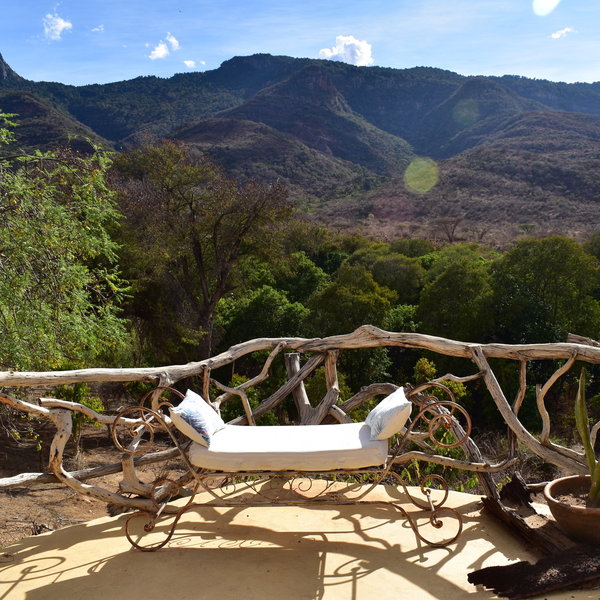
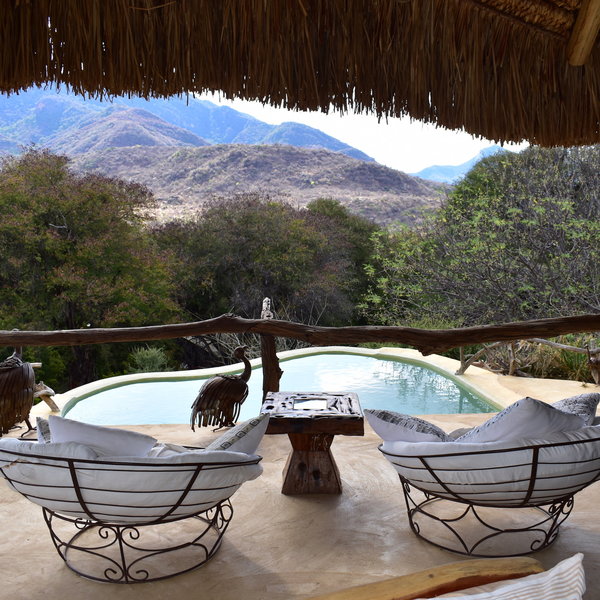
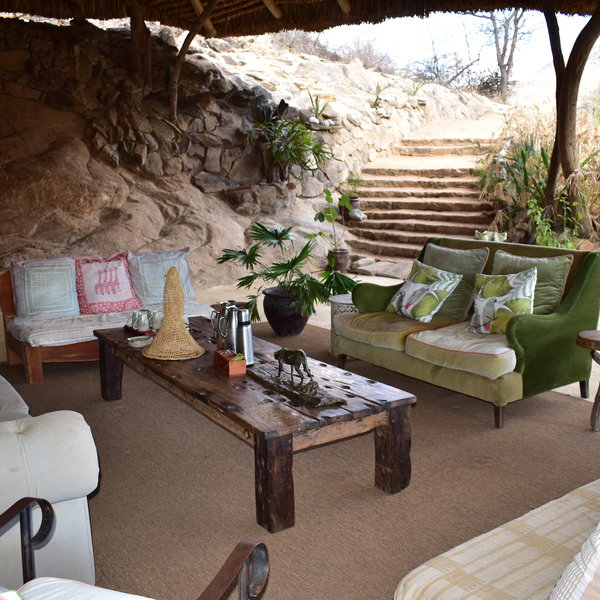
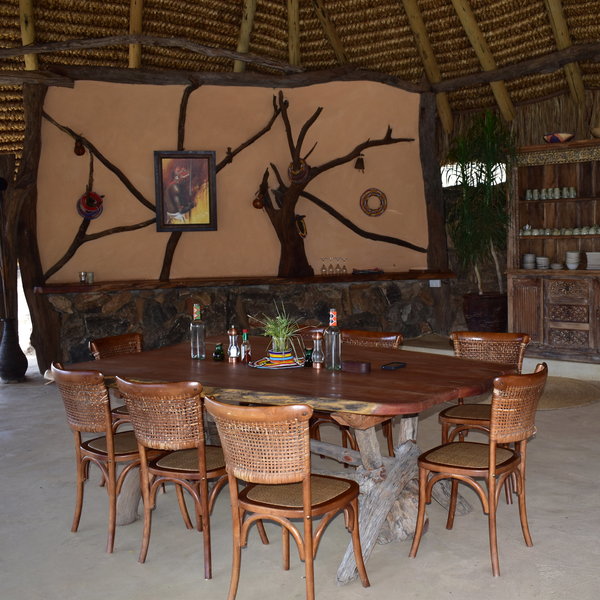
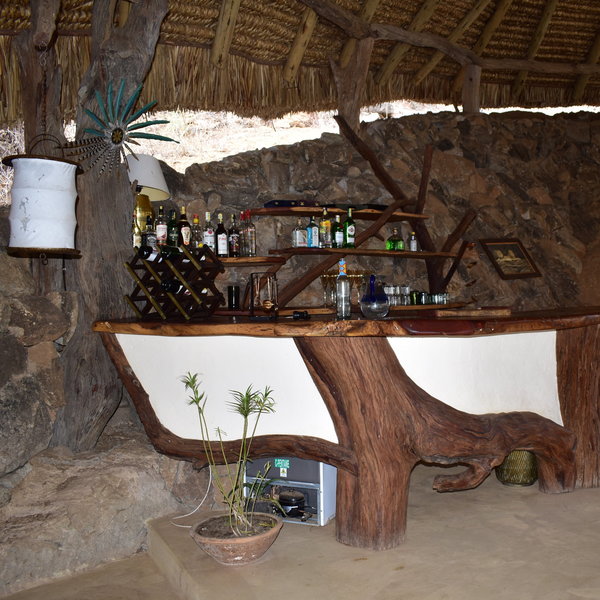
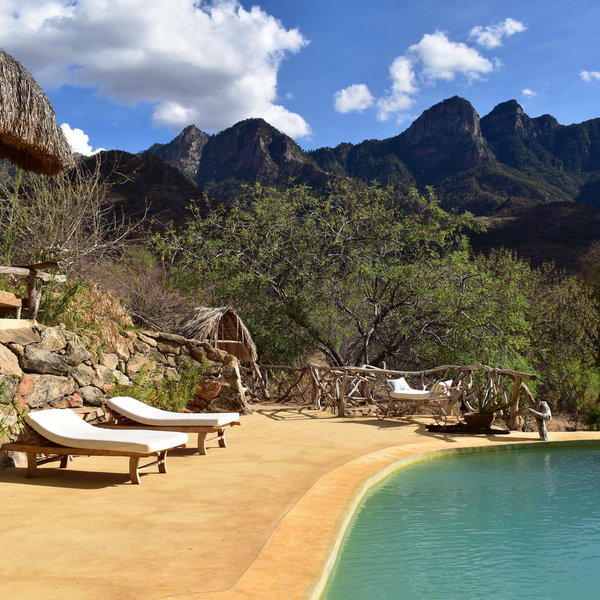
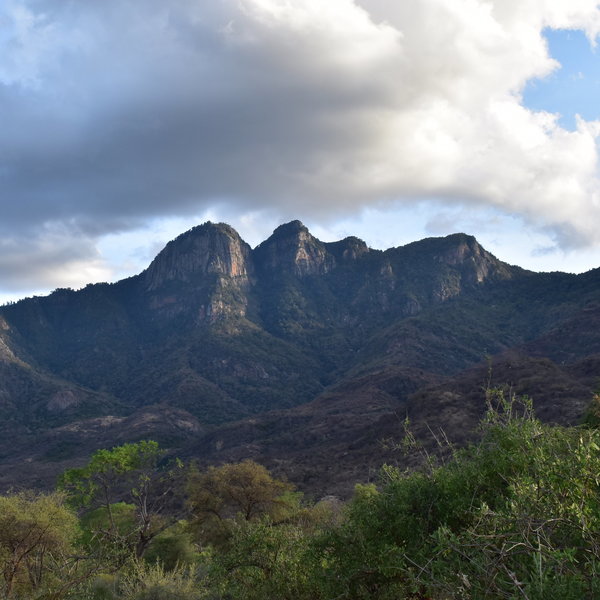
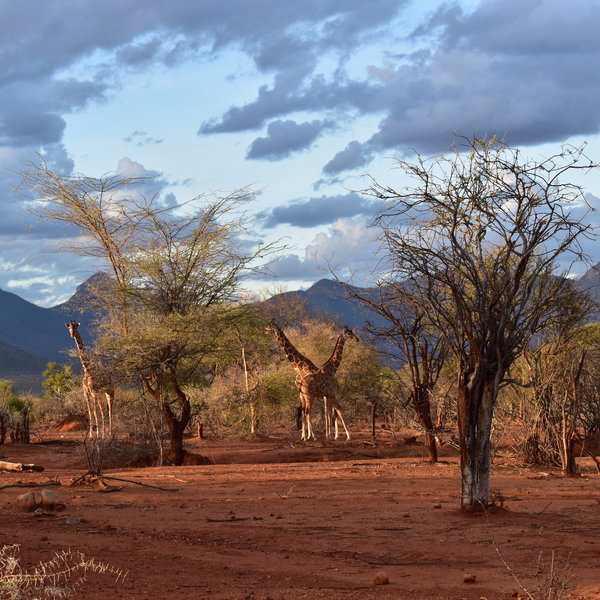
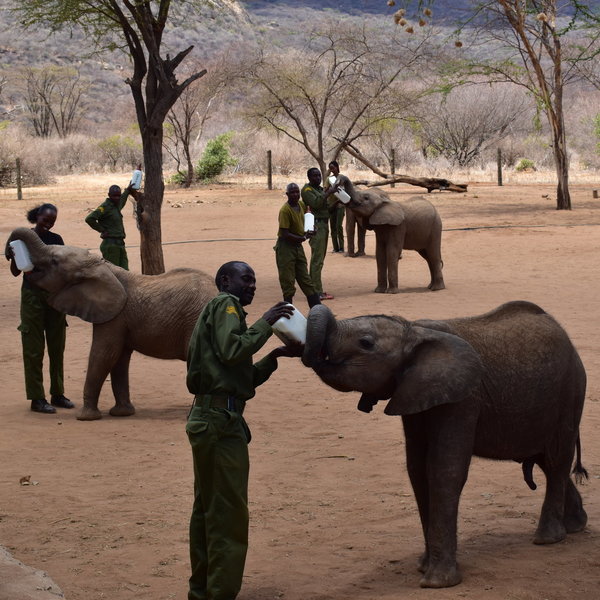
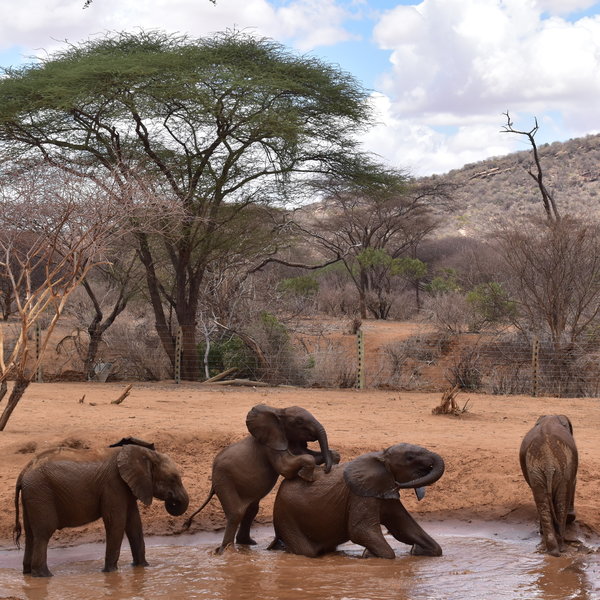
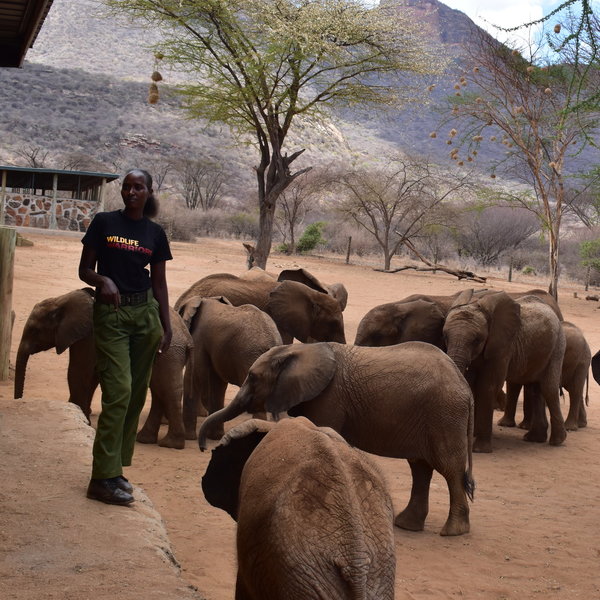
Expert Africa's gallery
When we travel we take lots of photos ourselves to give you a real and un-edited view of the safaris. See our 20 pictures of Sarara Treehouses to get the candid view.
View gallerySarara Treehouses: Our full report
Opened in 2018, Sarara Treehouses is the sister property of Sarara, which has gained a reputation as one ...
... of northern Kenya’s top camps. Located in a tropical forest and with breathtaking views of the Mathews Range, Sarara Treehouses provides a luxurious base to explore the wildlife of the Namunyak Conservancy.
While only a twenty-minute drive from its sister camp, Sarara, Sarara Treehouses feels like a world away. Rather than being on an open hillside, Sarara Treehouses is nestled in a verdant, mature forest. Colourful birds swoop through the trees and elephants explore the forest floor below. The views from the central area are spectacular and you feel surrounded by the mountains, with the dramatic profile of Warges, the highest mountain in the Mathews Range, looming above you.
The camp is deeply embedded into the local community and around 60 per cent of Sarara Treehouses’ income is invested back into the area, with funds being used to support a wide range of projects from conservation to education and healthcare. As a result Sarara and Sarara Treehouses have become vital lifelines for the local Samburu people, which make up some 1,200 families in the Namunyak community.
Sarara Treehouses is finished to the same high standards as Sarara, providing a good level of luxury with a rustic aesthetic. Large stone boulders form the back of the lounge and dining area, while exposed branches are set into the walls. The whole camp has been tastefully styled with lots of natural materials and a colour scheme of creams, fawns and forest greens. The result is a stylish, sophisticated camp which compliments its arboreal setting.
The central parts of camp are next to the small parking area and this is the highest area in the camp. The lounge and dining area are a high, thatched, open-sided structure from which you have views over the forest and the guest tents below and up to the mountains behind. A number of soft sofas and a coffee table are ranged at one end, while a large communal dining table sits at the other. There’s a well-stocked bar here with friendly staff on hand to offer you a drink. Steps lead down to a beautiful swimming pool with a couple of loungers and a daybed under a thatched roof.
From the main area of camp, a fairly steep and irregular flight of 73 steps descends the cliff to the valley below. Here, a network of raised walkways leads through the canopy to eight tree tents mounted on platforms among the trees. Four of these are closer to the central area of the camp and four are set deeper into the forest. The tents are identical in size, and each can be arranged as a double, twin or triple. Tents #1 and #2 are close together and work best for family groups. Inside the tents are are simply furnished with a king-sized double bed, bedside tables and a desk in one corner. At the back there is an en-suite bathroom which opens out to an outside shower. Toiletries by Cinnabar & Green are supplemented by a fragrant homemade body scrub. At the front of each tent is a balcony with a two sofas, perfect for watching the forest birds and butterflies or taking an afternoon nap.
For guests staying three or more nights, Sarara Treehouses can organise fly-camping in a dry riverbed. There is no additional cost for this, however it is best booked in advance.
An extensive range of activities is available from Sarara Treehouses. Game drives are a popular option, and while the big cats are not as prolific as in other regions of Kenya, you are likely to see plenty of other wildlife, including elephants, reticulated giraffes and other northern species such as gerenuks and Grevy’s zebras. While at Sarara Treehouses you have your own private vehicle and driver-guide, giving you the flexibility to explore on your own schedule. When we stayed here in October 2019 we were told that leopard sightings were relatively common, however unfortunately we were not so lucky. Nomadic lions roam the region, as do a number of bush-adapted cheetahs and caracals. Servals aren’t found here, but you may well see wild dogs, several packs of which move through Namunyak. As Namunyak is a private conservancy you can also go on night drives here, looking for the more elusive nocturnal creatures.
Sarara and Sarara Treehouses have nine open-sided long wheel base safari vehicles between them, one of which has charging power points. The camps do road transfers in these vehicles as far as Lewa and Samburu, but not down to Nairobi.
Bush walks are a great way to discover the area on foot and these can easily be combined with a visit to the Singing Wells. Sarara translates as ‘meeting place’ in the Samburu language and many different families gather at the wells to socialise while fetching water for their livestock. It is not the wells that sing but the local people, chanting to keep the rhythm as they draw pails from the well. This can be an enchanting experience, however due to cultural sensitivities photos are not allowed.
You can immerse yourself further in local culture with a visit to a local Samburu manyatta or village, accompanied by a local guide. You’ll learn something about the traditional Samburu way of life, the role livestock plays in the community and how people are adapting to the modern world. There may also be a chance to visit a local school.
We don’t think a stay at Sarara or Sarara Treehouses is complete without a visit to the Reteti Elephant Sanctuary. Set up in to 2016 along the lines of the David Sheldrick Wildlife Trust elephant orphanage in Nairobi, Reteti takes in young elephants which have been orphaned in northern Kenya. Each elephant has a different story: some were trapped in wells, others orphaned as a result of human-wildlife conflict and others became detached from their herd. A dedicated team of keepers develop close bonds with the elephants, hand-raising them until they are ready to be introduced back to a wild herd. Guests are welcome to visit Reteti from 8.30 to 10am for the morning feed, or from 11.30am to 1pm for the lunch feed. This is not a hands-on experience but you will be close: guests watch from a viewing platform while a keeper talks about the elephants and answers your questions. Visits to Reteti cost $25 per person, which you pay on arrival. You can read about the excursion on our Reteti Elephant Orphanage visit page.
Other activities at Sarara Treehouses include horse riding from the stables at Sarara, accompanied by experienced riding guides. You can also join local Samburu ladies for a beading workshop or even a try your hand at blacksmithing to make a traditional metal bracelet. If you’re feeling particularly active Sarara Treehouses can also arrange longer hikes in the Mathews Range.
Activities
4WD Safari
Birdwatching
Cultural excursion
Elephant encounter
Fly-camping
Guided walking safari
Horse-riding
Night drive
Private activities
Families & children
- Attitude towards children
- Sarara Treehouses accepts children aged 6 and above, but they feel it is better suited to those aged 8 and above.
- Property’s age restrictions
- Minimum age is 6.
- Special activities & services
- The guides can happily arrange child-friendly activities, from playing football to looking for animal tracks, making bows and arrows and creating jewellery with local Samburu ladies. There is no formal babysitting service, however the housekeeping team are happy to help. Child-friendly meals can be arranged.
- Equipment
- Extra beds for children can be arranged with prior notice. There are no specific family rooms, however a number of the tents are closer together.
- Generally recommended for children
- Sarara Treehouses generally has a more adult atmosphere, however older children are likely to enjoy the novelty of sleeping high up in the trees and there is a wide range of activities on offer to keep them entertained.
- Notes
- The camp is unfenced and big game is regularly seen in the area. The tents are raised around five meters above the ground and children should be supervised at all times.
Food & drink
- Usual board basis
- Full Board & Activities
- Food quality
- When we stayed here in October 2019 we found the food at Sarara Treehouses to be excellent – fresh, tasty and full of flavour. In camp, all meals are typically eaten communally, although packed breakfasts and lunches can easily be arranged.
Breakfast was a varied selection of cereals, fruits, bread and yoghurts, all laid out on the communal dining table. Hot items were available on request with eggs cooked to order.
Lunch was a beautiful buffet of salads, homemade pesto pasta, focaccia, chutneys, and meat-based and vegetarian pizzas. Desert was a tropical fruit salad.
For dinner we started with crispy spring rolls, followed by roast chicken, potato croquettes, honey glazed carrots and red cabbage. We rounded up the meal with a decadent chocolate brownie. - Dining style
- Group Meals
- Dining locations
- Indoor and Outdoor Dining
- Further dining info, including room service
- Room service is possible although there are no phones in the rooms, so this needs to be organised in advance.
- Drinks included
- All drinks are included at Sarara Treehouses with the exception of premium wines and spirits and Champagne.
Our travellers’ wildlife sightings from Sarara Treehouses
Since mid-2018, many of our travellers who stayed at Sarara Treehouses have kindly recorded their wildlife sightings and shared them with us. The results are below. Click an animal to see more, and here to see more on our methodology.

100% success

100% success

83% success

50% success

40% success

25% success

20% success

20% success

20% success

20% success

0% success

0% success

0% success

0% success

0% success
Getting there
- Location
- Northern Kenya, Kenya
- Ideal length of stay
- Stay at least three or four nights to explore the area and try the different activities.
- Directions
- Sarara Treehouses is a 20-minute drive from Sarara Airstrip, which can be accessed by charter flight from Nairobi. Alternatively you can take a scheduled flight to Samburu Kalama Airstrip followed by a road transfer of around two hours to reach the camp.
- Accessible by
- Fly-and-Transfer
Special interests
- Cultural Experiences
- Sarara Treehouses has strong ties with the local Samburu community. Visit a local village for an authentic cultural experience and stop by the ‘singing wells’ where people sing as they collect water for their livestock.
- See ideas for Cultural Experiences in Kenya
- Scenic walking & hiking
- With a backdrop of the Matthews Range, Sarara Treehouses offers some excellent opportunities for walking. Accompanied by an armed ranger you can take a gentle stroll through the bush or go on a longer all-day, or multi-day, hike in the mountains.
- See ideas for Scenic walking & hiking in Kenya
Communications
- Power supply notes
- There is a back-up generator. The tents have plugs for charging batteries and devices, but are not suitable for hair-dryers.
- Communications
- WiFi is available in the communal areas, but not in the tents.
- TV & radio
- There is no TV at Sarara Treehouses.
- Water supply
- Borehole
- Water supply notes
- The showers are powered by solar water heaters. It is fairly sunny here and for the most part the solar heaters are very efficient, however it may take hot water a while to come through on a cloudy day.
Health & safety
- Malarial protection recommended
- Yes
- Medical care
- Several of the staff are first aid-trained and there is a first-aid kit on site. There is a good missionary hospital at Wamba, which is around 40km or a three-hour drive away. Alternatively, the lodge has links to a flying doctors service in Nairobi.
- Dangerous animals
- High Risk
- Security measures
- There are whistles in each tent and you are escorted to and from your tent after dark.
- Fire safety
- There are fire extinguishers dotted around the camp.
Useful info
- Disabled access
- Not Possible
- Laundry facilities
- A 24-hour laundry service is included however for cultural reasons they do not accept ladies' underwear.
- Money
- Sarara Treehouses can occasionally exchange small amounts of money, however this depends on what they have in camp.
- Accepted payment on location
- Sarara Treehouses accepts payments in US dollars, Kenyan shillings, British pounds and euros. You can also pay by card, including Visa and Mastercard, but not American Express. There is no surcharge.
Plan and book your trip with Expert Africa
All of our trips are tailor-made, so we'll always adapt them to suit you. Talk to an Expert and let us plan and arrange your perfect trip.

Talk to an Expert
Call or email us now! We’ll match you with the Specialist in our team who is best suited to help you. Then together we can start planning your trip.

Set up your itinerary
Based on our experience and your ideas, your specialist will create a detailed, costed itinerary. We’ll refine it together, until we have a trip that you’re perfectly happy with.

Prepare for your trip
The same Specialist will make the seamless arrangements for your trip, send you detailed travel documents, and be available to answer any questions before you depart.

Travel with peace of mind
After you set off, you’ll be cared for by our partners in Africa, most of whom have worked with Expert Africa for decades. And if you ever need us urgently, we’re available 24/7.

When you return
We love to learn about your trip, and so will always be grateful if you’ve the time to give feedback to your Specialist when you return.
Sarara Treehouses's location
Look closer at the environment and surroundings of Sarara Treehouses.
Excursions from Sarara Treehouses
Optional extra day-trips and excursions possible whilst you're staying at Sarara Treehouses. Talk to us: these are usually best arranged before you go.
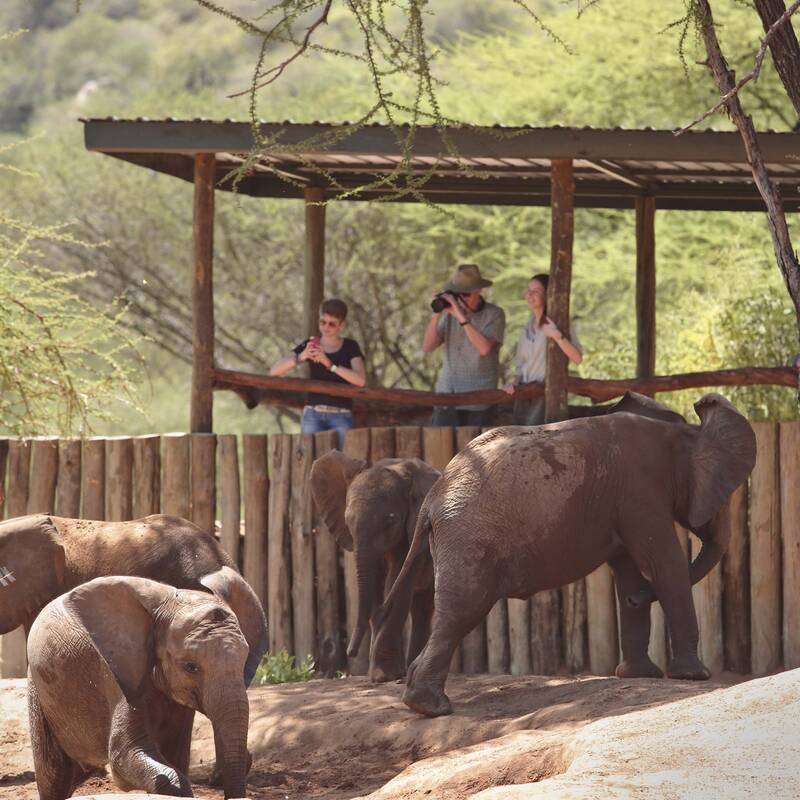
Reteti Elephant Orphanage visit
One-and-a-half hours, plus transfers
Visit the community-run Reteti Elephant Sanctuary in Samburu, for an intimate experience meeting the orphaned baby elephants who have been rescued from the surrounding regions. They are hand-reared by Samburu keepers, until they are ready to be released back into the wild.
More about Reteti Elephant OrphansOther lodges in Northern Kenya
Alternative places to stay in this same area.
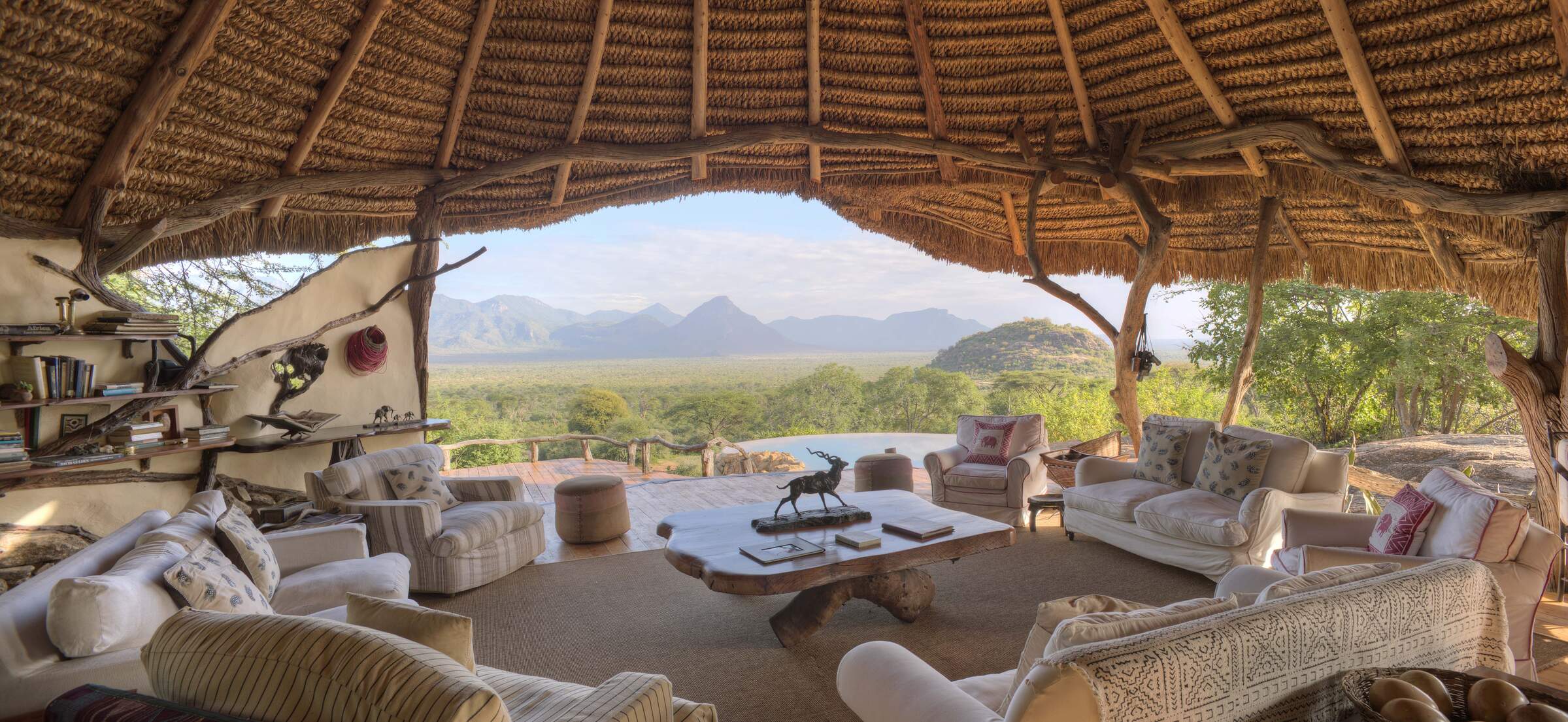
Sarara
Sarara is an outstanding safari lodge, with access to a vast wilderness region. Walks, drives and cultural experiences are on offer, all with very good guides.
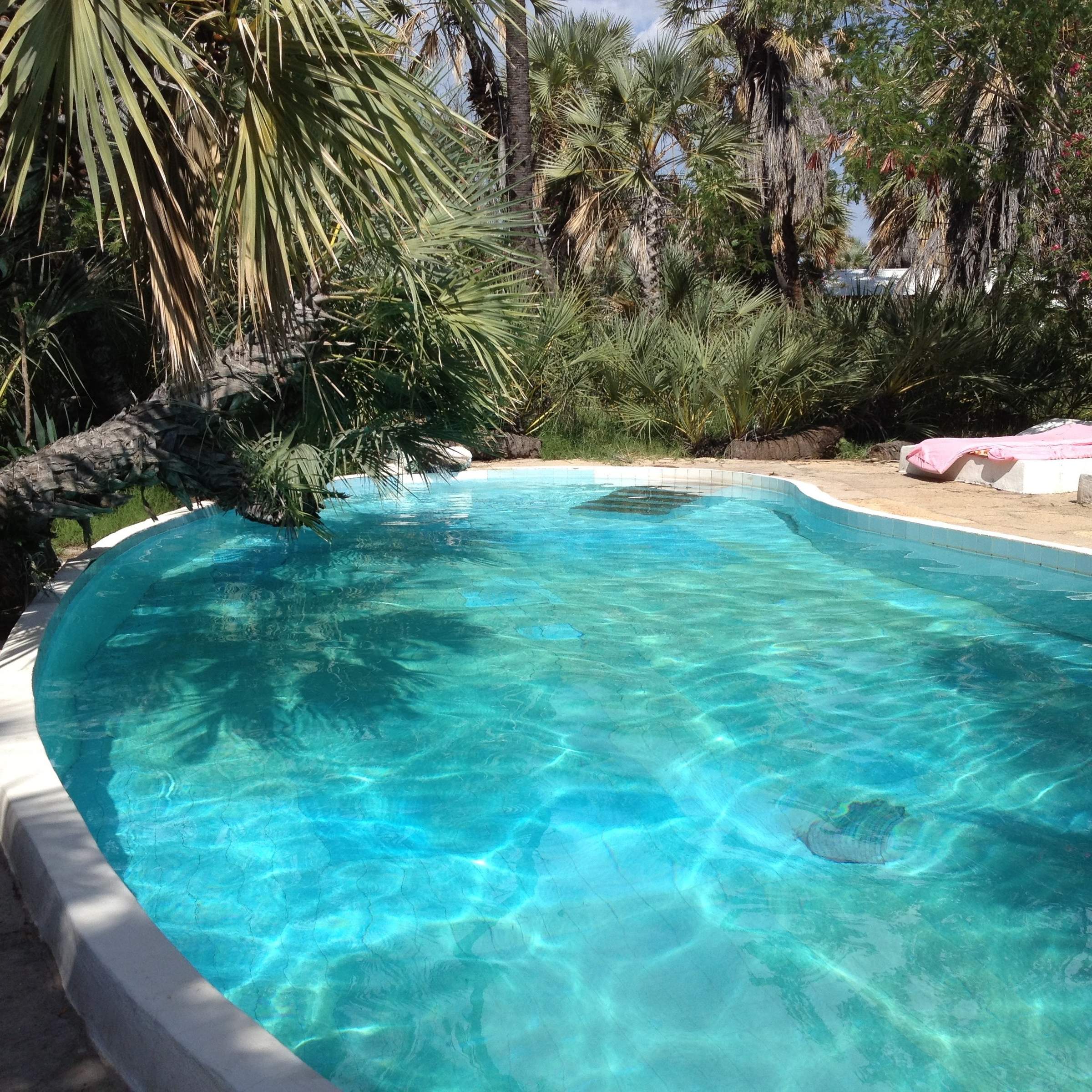
Oasis Lodge
Oasis Lodge is a basic hotel for adventurous travellers near the east shore of Lake Turkana.
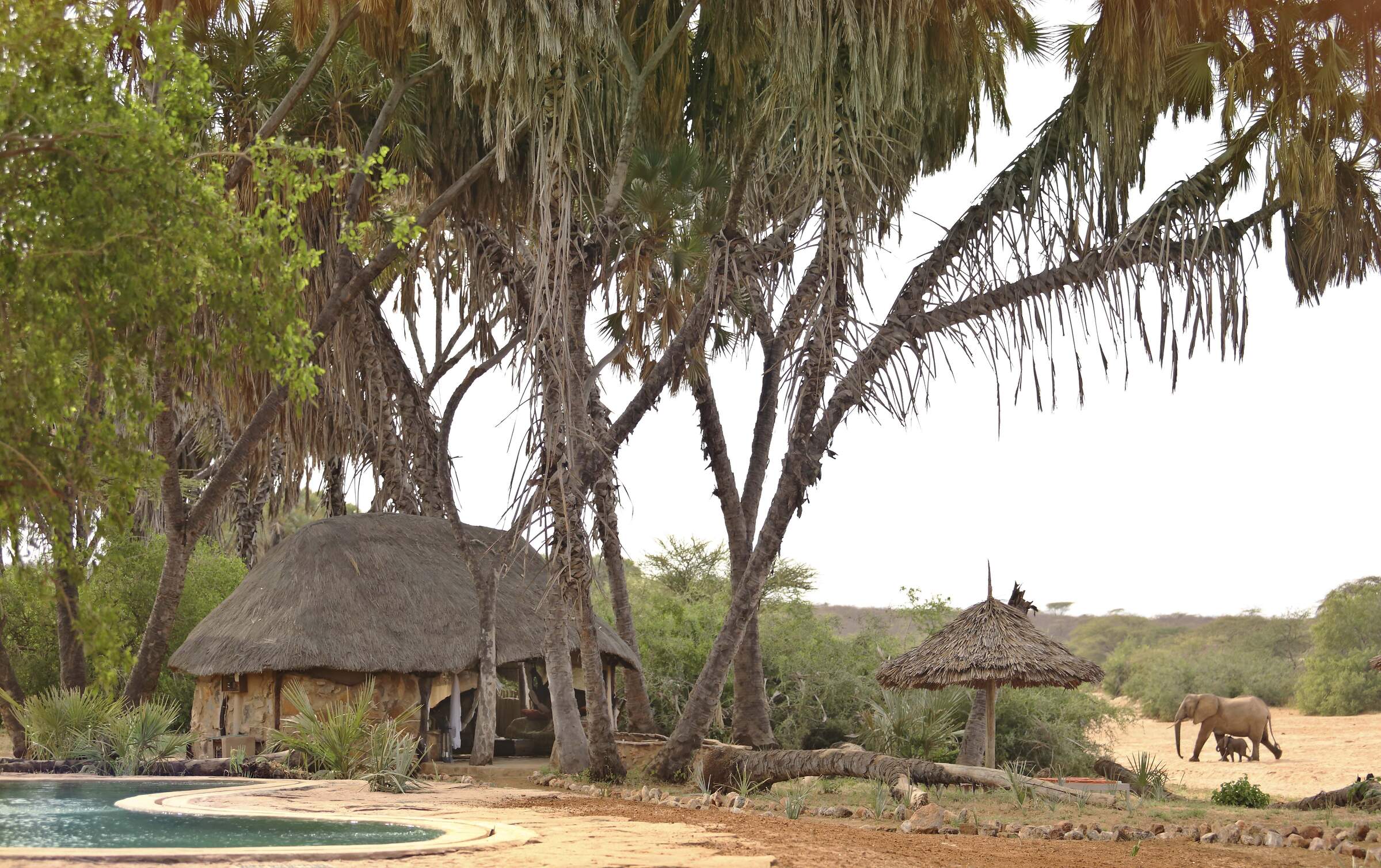
Saruni Rhino
Saruni Rhino is the only camp in the Sera Conservancy in northern Kenya, where guests are based when tracking black rhino on foot.
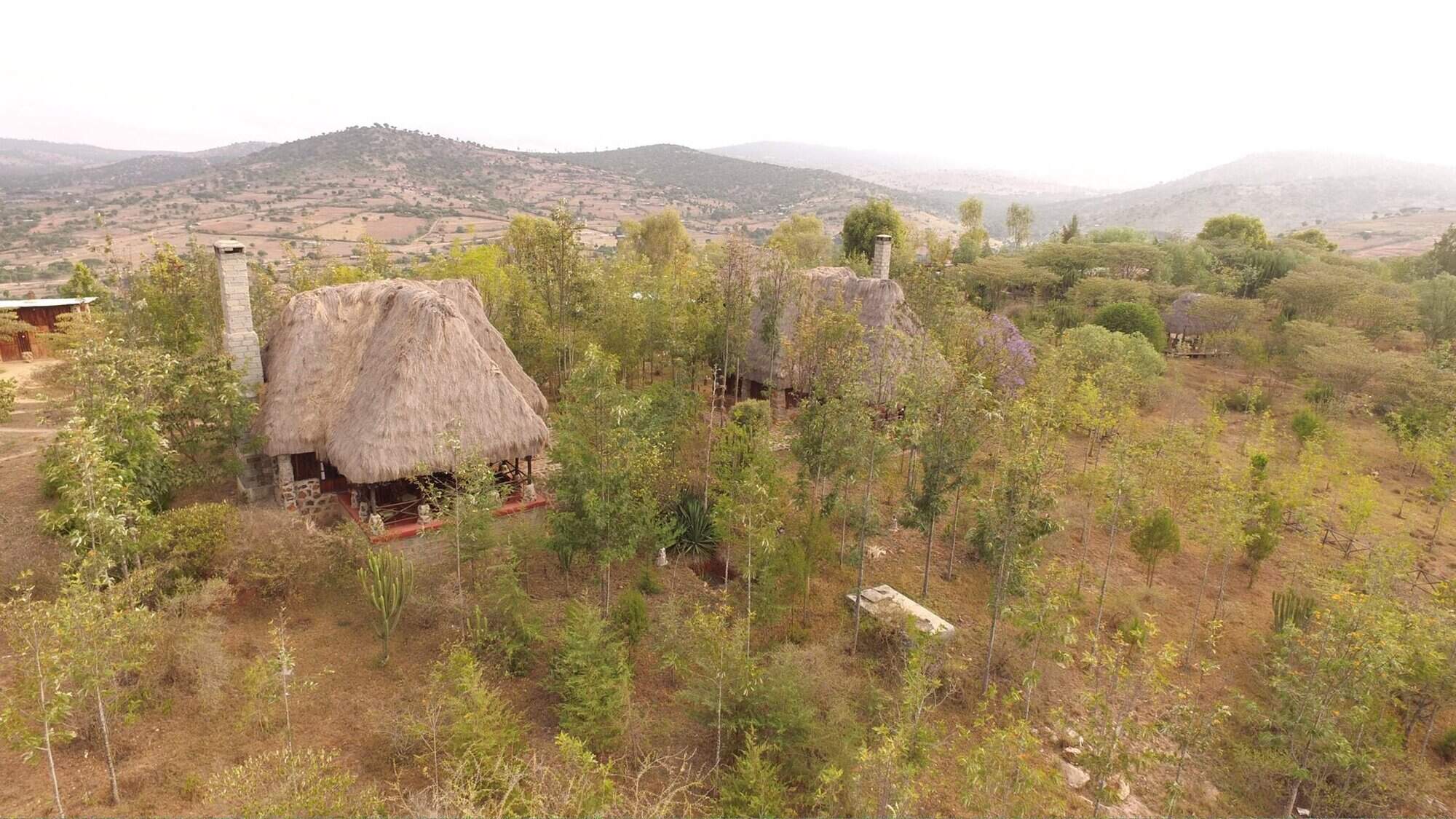
Ngari Hill Ecolodge
The 6-room Ngari Hill Ecolodge is the only full-service lodge in Maralal and makes a convenient overnight stay en route from Nairobi to Lake Turkana.
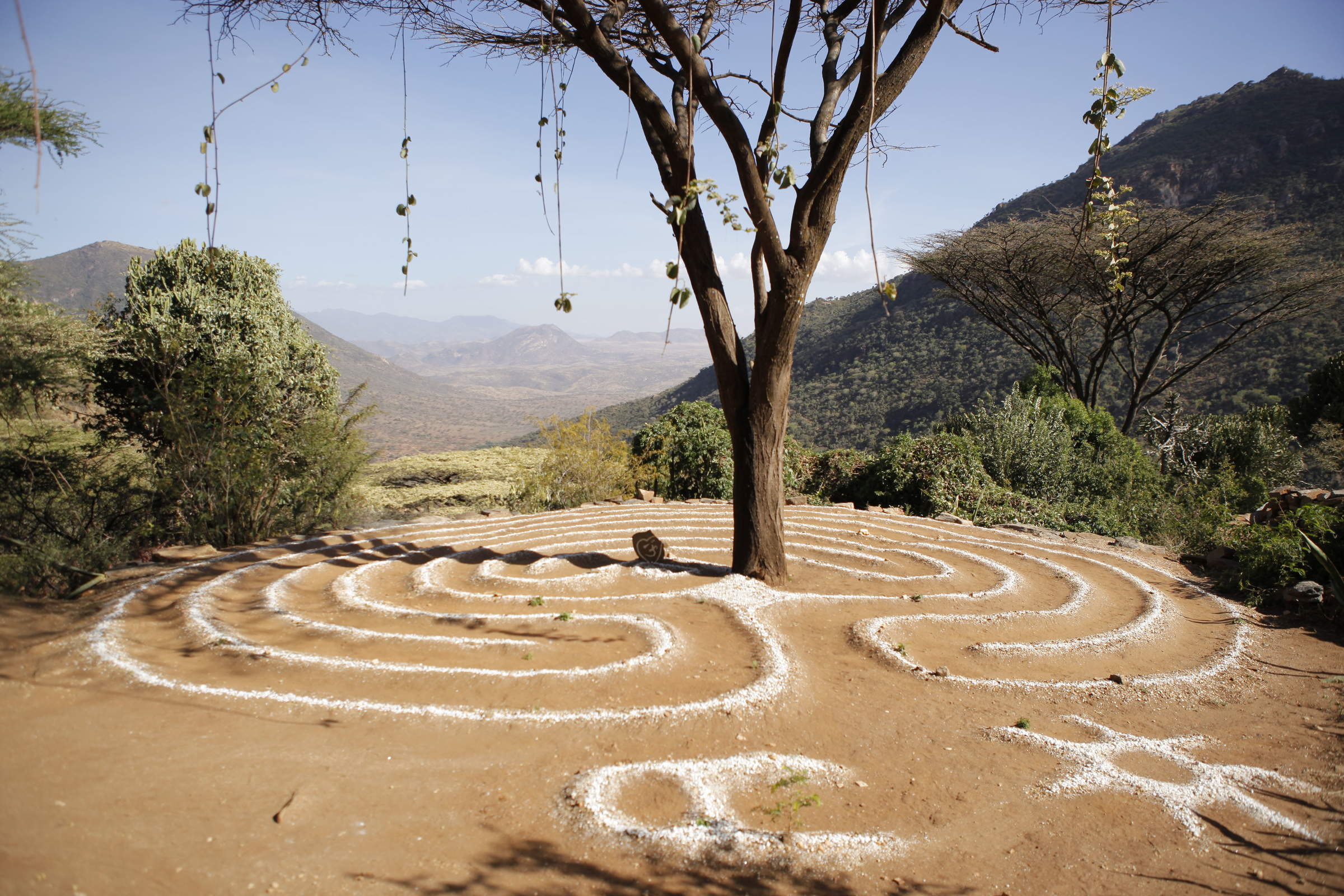
Desert Rose
This small, unique mountain lodge – Kenya’s northernmost luxury accommodation – is set amid the towering landscapes of Mount Nyiru, and is a superb place for rest and relaxation.
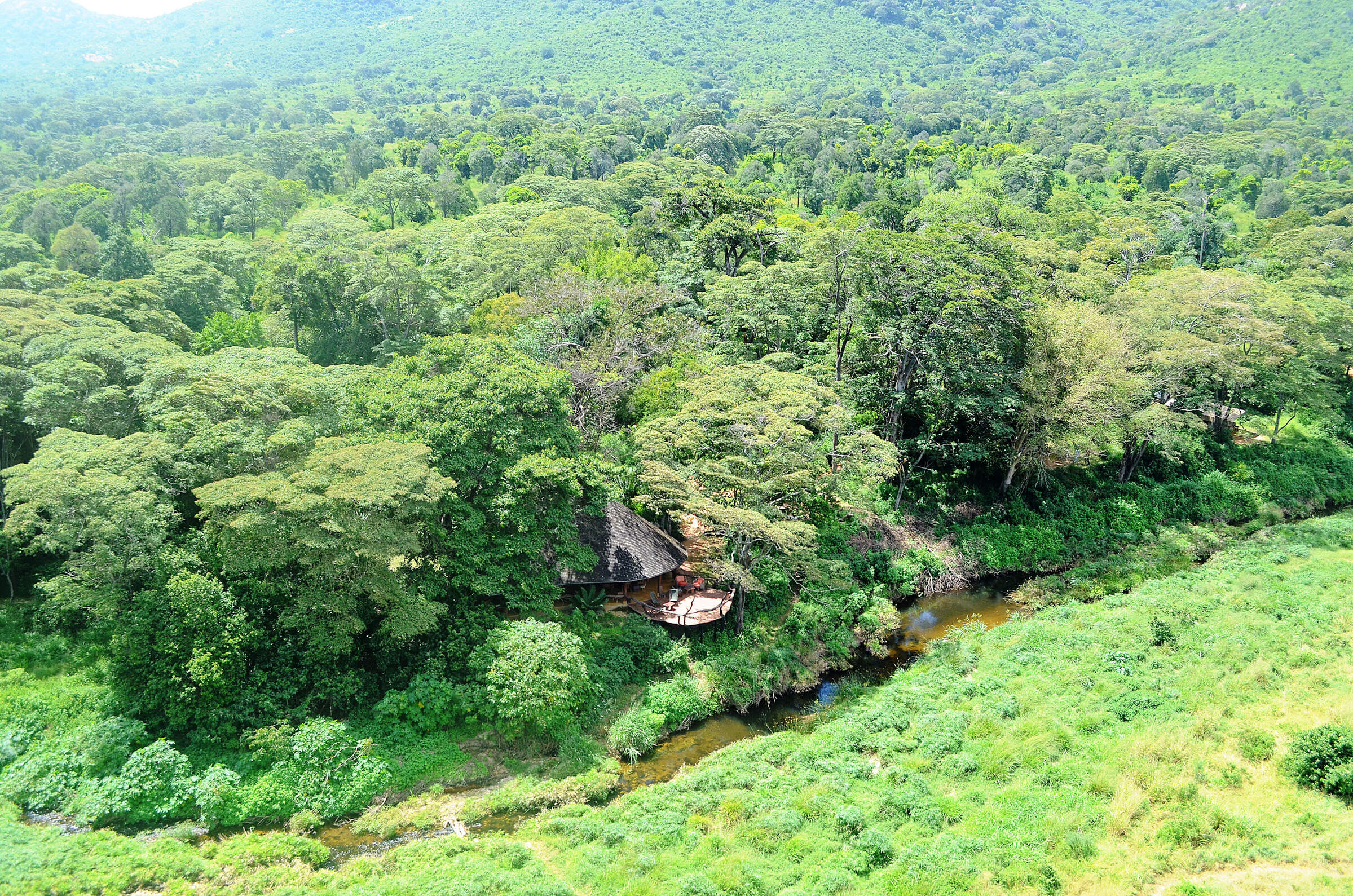
Kitich Forest Camp
Kitich Forest Camp is one of Kenya's most established, remote highland forest camps, offering exciting bush walks and close encounters with big game as well as insects and birdlife.
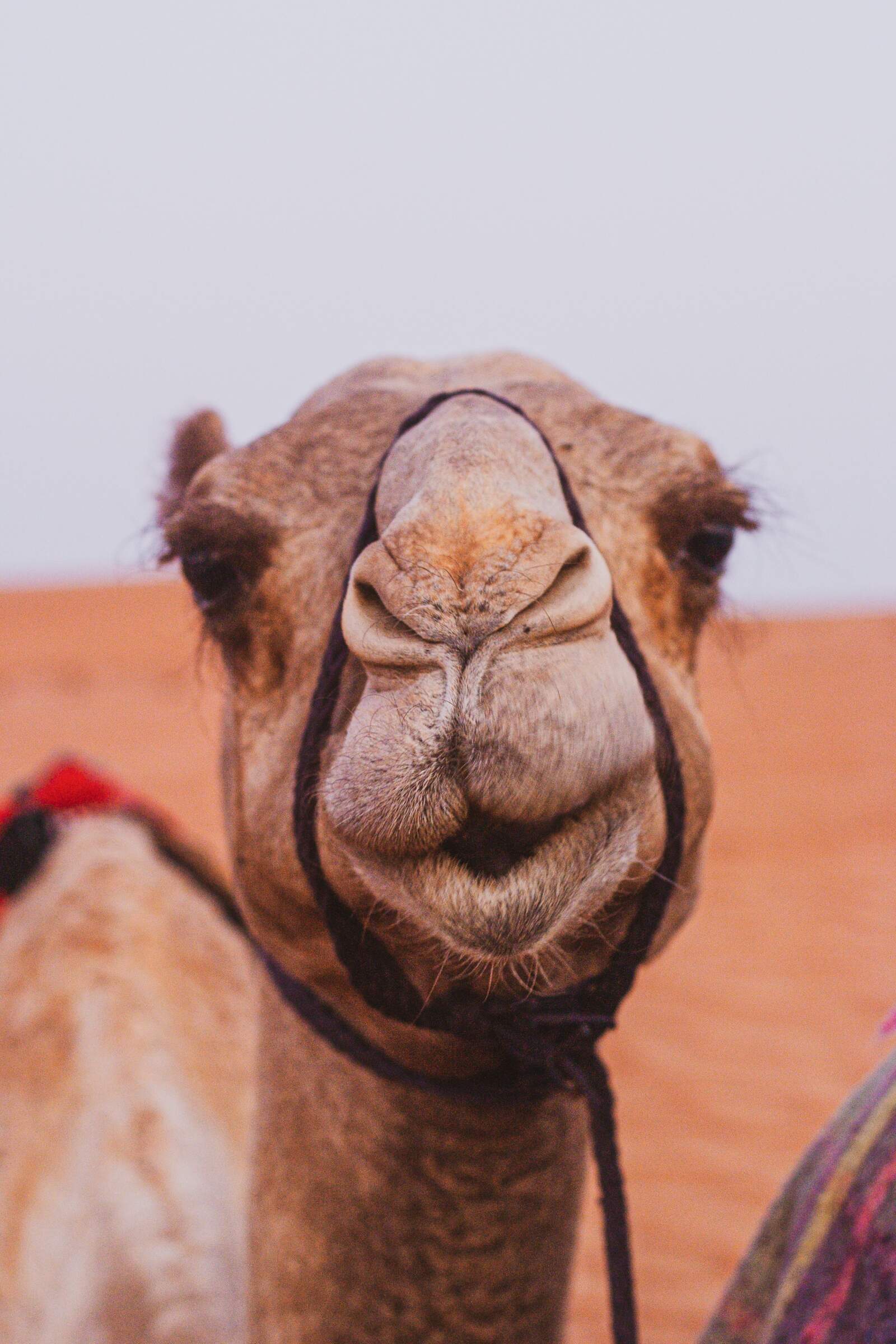
Wild Frontiers
Wild Frontiers Camel treks are based in the Milgis River area and run in various parts of northern Kenya between Lake Turkana and Laikipia.
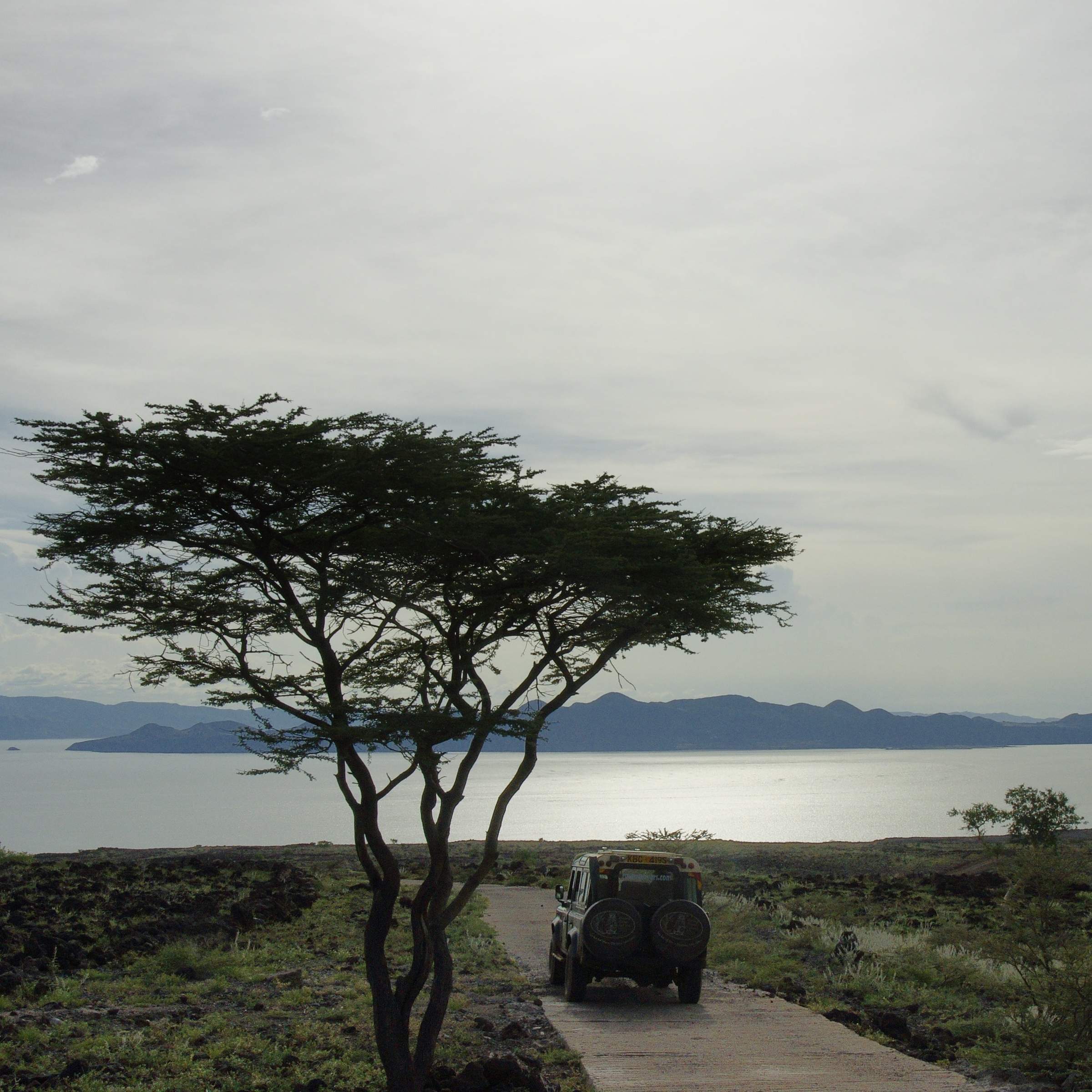
Palm Shade Camp
Palm Shade Camp is a simple camp for adventurous travellers near the east shore of Lake Turkana.
When to go to Northern Kenya
Our month by month guide: What it's like to visit Sarara Treehouses in Northern Kenya
Jan
Feb
Mar
Apr
May
Jun
Jul
Aug
Sep
Oct
Nov
Dec
Kenya in January
Clear, hot days and warm nights make this high season a popular time for safaris and it’s also good for diving and snorkelling as water clarity is excellent and gets better as the dry season progresses. Most lodges and tented camps treat January after the New Year week is over, as mid-season, making it a good compromise in terms of value for money with reasonably reliable, dry weather and some greenery left in the landscape.
Expert Africa bases its description of climate and weather in January, like the other months of the year, on the climate records of roughly the last 100 years, and it's fair to say that the weather and seasons since the beginning of this century have been highly irregular and unpredictable.
- On average, January is the second driest month of the year
- Elephants dig waterholes in the dry riverbed in the Samburu reserve.
- Wildebeest and many antelope have their calving season, to February.
- Migrant birds are seen in huge numbers, especially in the Rift Valley.
- Sea water clarity around the coral reefs generally good.
Our view
Fantastic: the very best time to visit
Weather in January
Kenya in February
With the short dry season well established, the grass grazed down and wildlife gathering close to water points, this is still a good time for a safari. Good water clarity in the Indian Ocean's coastal waters makes for excellent diving and snorkelling conditions.
Expert Africa bases its description of climate and weather in February, like the other months of the year, on the climate records of roughly the last 100 years, and it's fair to say that the weather and seasons since the beginning of this century have been highly irregular and unpredictable.
- On average, February is the driest month of the year.
- It’s sometimes possible to swim with whale sharks at Diani Beach.
- Migrant birds are still seen everywhere, especially near water.
- This is usually peak calving season for wildebeest and many antelopes.
- This month is often the hottest of the year, especially on the coast.
Our view
A very good time to visit
Weather in February
Kenya in March
Hot, increasingly humid weather – with good diving and snorkelling conditions at the start of the month – gives way to rains and lower accommodation costs. Expert Africa bases its description of climate and weather in March, like the other months of the year, on the climate records of roughly the last 100 years, and predicting the seasons since the beginning of this century has been difficult.
March is the month when – traditionally – intensely hot conditions build up until a cloudburst finally happens at the end of the month or in early April, to relieve the humidity. As ever, regional variations across the country can greatly impact on visitors' experiences.
- Sea-water clarity is best for diving before the long rains start.
- Visitor numbers are low, though the Easter holidays can be busier.
- Night skies can be scintillatingly clear in early March.
- Cropped down savannah grasses can make it easier to see the wildlife.
- Temperartures climb high, especially at lower elevations.
Our view
A good time to visit, with pros & cons
Weather in March
Kenya in April
April sees the full onset of the southeast monsoon wind or kusi, which heralds the long rains. Temperatures drop soon after the rains are established and you’ll often have facilities largely to yourself in this more affordable low season, sometimes known as the "green season". The bush quickly springs to life, with greenery sprouting almost before your eyes. While you're likely to get a fair number of heavy showers, the breaks in the rain can yield sparklingly clear conditions.
With the dust settled and bright sun piercing the clouds, conditions can be sublime for photography, especially first thing in the morning or in the late afternoon with another storm brewing. You may be lucky, or you may find conditions very wet and muddy.
- A wet month, the coast often gets more than 300mm (12in) of rain.
- Sunny spells can provide great light for photography.
- Buffalo and zebra calving season often happens in this month.
- Baby crocodiles hatch, for example on Central Island in Lake Turkana.
- Palearctic migrant birds gather to fly north to breeding grounds.
Our view
A time to avoid if possible
Weather in April
Kenya in May
While game viewing can be trickier as vegetation runs riot, between the cloudbursts the colours and light are great for photography at this time of year. Expert Africa bases its description of climate and weather in May, like the other months of the year, on the climate records of roughly the last 100 years, and while it's reasonable to expect heavy rains in many parts during this month, especially on the coast, the rains don't always come evenly or in some areas come at all.
In an El Niño year, the so-called long rains that normally are established across much of the country by May can be meagre, to the despair of farmers. On the other hand in a La Niña year, the long rains can bring floods. On the coast, the monsoon winds make the climate much more predictable, with heavy rains common throughout this month.
- Frogs breed in the ponds in the Arabuko Sokoke Forest near Watamu.
- Wildebeest, impala and other grazers are in rut (the breeding season).
- Kilimanjaro looks its best as heavy rain falls as snow on the summit.
- There's a sharp peek of rainfall on the coast with many rainy days.
- Accommodation prices are uniformly low, while some camps close.
Our view
A time to avoid if possible
Weather in May
Kenya in June
The rains give way to cloudy, cooler weather, often making for comfortable conditions by the end of the month, especially in the highlands. Starting from mid-June or the beginning of July and running until the end of October, this is the high season, and accordingly has higher accommodation rates and – at least until early September – higher numbers of visitors.
While the early part of June can often be rainy on the coast, it can be a great time to go on safari, with fresh greenery, many young animals and good photographic conditions with clear air.
- The Taru Desert, inland from the coast, is carpeted with flowers.
- The Lake Turkana Cultural Festival is held in Loiyangalani.
- Madaraka Day (commemorating self rule) is 1 June.
- The annual Lewa marathon runs a course through the wildlife.
- The Diani Rules "sports" event rips up the rulebook at Diani Beach.
Our view
A good time to visit, with pros & cons
Weather in June
Kenya in July
Kenya’s “winter" season sets in (winter is a misnomer but locals feel the change), and the highlands can be rather grey. Skies are often cloudy and the days can be surprisingly cool, with an average daytime high in many highland safari areas of 15-20°C and night-time temperatures dropping below 10°C in Nairobi and the highlands. Lower parts of the country and the coast are usually warm and dry, typically reaching highs of around 25°C with lows in the high teens.
As this is the start of the high season, coinciding with the usual arrival of the wildebeest migration in the Maasai Mara, July is a busy month. Ask your Expert Africa specialist to advise on how to avoid the crowds, which is not that difficult to do.
- The wildebeest migration usually reaches the Maasai Mara in July.
- Simbi Lake (Kisumu) and Crater Lake (Naivasha) can attract flamingoes.
- Watersports start to pick up and some surfing is possible at Malindi.
- Afternoon thunderstorms are a common feature in the Maasai Mara.
- The sea can be choppy along the coast, making diving difficult.
Our view
A good time to visit, with pros & cons
Weather in July
Kenya in August
The Great Migration fills the plains of the Maasai Mara, and school’s out, so the park roads are full of tourists – ask your Expert Africa specialist for advice on crowd avoidance tactics. Choose a private conservancy rather than a public national park or national reserve for quieter conditions.
Like July, August is generally mild and relatively dry in the safari areas, but it can be very chilly in the highlands, even in the middle of the day, and hail occasionally falls above altitudes of around 2,400m (8,000ft). Nairobi can be disappointingly overcast, with low cloud.
- Apart from Christmas holidays, this is the busiest month of the year.
- Late August sees peak wildebeest drama at the Mara River crossings.
- Coastal winds are good for kite- and wind-surfing.
- Few mosquitoes are around at this generally dry time of year.
- The annual Camel Derby takes place in the Samburu capital, Maralal.
Our view
A good time to visit, with pros & cons
Weather in August
Kenya in September
The skies clearing of cloud signals the start of hot, dry weather with little chance of rain – and, after the first few days of the month, far fewer visitors – making the latter part of September a good time for a quieter safari. While early September is often good for dramatic migration crossings along the Mara River, you might consider deliberately postponing your trip until later in the month, when the migration can still be very impressive and visitor numbers fewer.
If tourist surges are somewhat predictable, however, the patterns of the wildebeest migration are more volatile, and like all of Expert Africa's climate and weather assessments, they are based on accumulated years of experience rather than guaranteed certainty.
- This is still high season, with prices to match.
- Many river crossings take place on the Mara river in both directions.
- Natural bush fires flush out insects and small animals for predators.
- The Rift Valley Music Festival takes place by Lake Naivasha.
- With school holidays over by early September, late-month is quieter.
Our view
Fantastic: the very best time to visit
Weather in September
Kenya in October
Still hot, mostly dry and not too busy, this is many people’s preferred month for a safari, and it’s also good for diving and snorkelling. The wildebeest and zebra herds of the great migration are often still to be seen, though in dwindling numbers. The swamps of Amboseli attract thirsty wildlife including large herds of elephants.
While we wouldn't expect much rain across most of the country this month, the climate has become so unpredictable that you can never say never, and the possibiity of the short rains – usually associated with November to mid-December, starting early, can't be discounted.
- This month sees the tail end of the great migration in the Mara.
- Palearctic migrant birds start to arrive, staying until March.
- Turtle nests hatch at Watamu, until November.
- Amboseli elephants focus on the swamps for their daily water.
- The Indian Ocean monsoon winds turn from southeast to northeast.
Our view
A very good time to visit
Weather in October
Kenya in November
The northeast monsoon wind or kaskazi heralds the start of the “short rains", usually some time in the second half of the month. From November to mid-December, this is the low season, and accordingly has lower accommodation rates and lower visitor numbers. Across most of the country you can expect warm, somewhat cloudy weather, with occasional heavy showers and localised flooding.
Expert Africa bases its description of the climate in November, like the other months of the year, on the records of roughly the last 100 years, and it's fair to say that the seasons since the beginning of this century have been highly irregular and unpredictable: some years the short rains don't come at all, or don't reach every part of the country. In an El Niño year, the November short rains can be very heavy, but in a La Niña year, they can fail completely.
- Swimming with dolphins in Lamu can be done from now until April.
- Birders gather at Ngulia in Tsavo West to ring Palearctic migrants.
- The Lamu Cultural Festival takes over the town and Lamu Creek.
- Agricultural shows often take place regional market towns.
- This is low season, so camps can be great value, with special offers.
Our view
A good time to visit, with pros & cons
Weather in November
Kenya in December
In a typical December, the rains usually finish by middle of the month, leaving the landscape looking its best, under clear blue skies, and heralding the start of the second peak tourist season from around 20 December to the first week of January. Our assessment of the likely weather in December, like the other months of the year, is based on climate records, and it's fair to say that the seasons since the beginning of this century have been highly irregular and unpredictable.
Christmas can sometimes be wet, but most years the rains have finished a week or two earlier, with the festive season ushering in the perfect combination of clear skies and sunshine by day and starry nights.
- Christmas and New Year are busy, with the lodges and camps full.
- Rates are highest after 24 Dec, with supplements on public holidays.
- Republic Day and Independence day are celebrated on 12 December.
- Good kite- and wind-surfing restarts, with strong northeasterly winds.
- Mango season begins, providing excitement for primates and elephants.
Our view
A good time to visit, with pros & cons
Weather in December

Looking for inspiration on where to travel next?
Visit our trip chooser to explore your options and find inspiration for your perfect African adventure
Inspire me